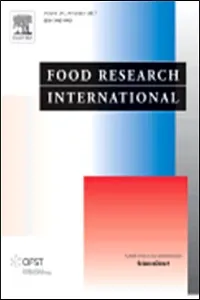Spatial distribution of dry matter in yellow fleshed cassava roots and its influence on carotenoid retention upon boiling

Abstract
Understanding retention of carotenoids after different processing methods is important. This study was conducted to quantify dry matter content and carotenoids found in different sections of the cassava roots from six clones and to assess true retention of carotenoids after 30 min of boiling. Retention was quantified in normalized prisms taken from proximal, central and distal sectors of the root. Dry matter content (DMC) was measured along and across the roots and varied from 14.1 to 51.0%. DMC tended to be lower at the center of the root and in distal sections. DMC affected the homogeneity of the food matrix and, therefore, contributed in spatial variation in retention of carotenoids. Average true retention (dry matter basis) was 86.6% and ranged from 76.0 and 96.7% (averages per clone and section of the root, respectively). Retention was positively associated with carotenoid content in unprocessed samples, although the relationship was weak. The study shows that during boiling weight of samples changed from slight losses to gains of up to 40% (depending on original DMC of the uncooked root), resulting in an apparent dilution of the carotenoids. Results suggested the occurrence of some isomerization. All-trans ?-carotene losses (13%) were partially explained by increases in the 13-cis (34%) and 15-cis (8%) isoforms, as well as lixiviation (< 1%) into the boiling water.
